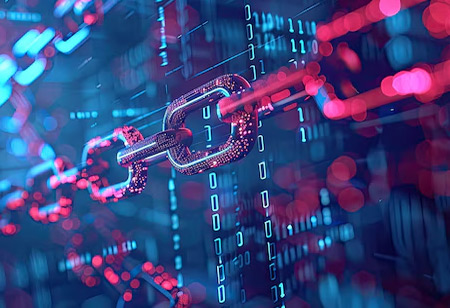
Blockchain Technology in Asset Management. How Innovation Is Changing the Game

 The asset management industry is rapidly evolving, and blockchain technology is at the heart of this transformation. Traditional barriers like high capital requirements and lack of transparency are being dismantled by new digital frameworks. Today, crypto services for asset managers are no longer fringe tools — they're essential components of modern portfolio strategies. From real estate to government bonds, blockchain-based solutions are bringing efficiency, accessibility, and trust to how assets are structured and traded.
The asset management industry is rapidly evolving, and blockchain technology is at the heart of this transformation. Traditional barriers like high capital requirements and lack of transparency are being dismantled by new digital frameworks. Today, crypto services for asset managers are no longer fringe tools — they're essential components of modern portfolio strategies. From real estate to government bonds, blockchain-based solutions are bringing efficiency, accessibility, and trust to how assets are structured and traded.
Asset Tokenization and Financial Democratization
One of the biggest breakthroughs in this space is asset tokenization. At its core, tokenization means converting ownership rights of real-world assets, like property or stocks, into digital tokens on a blockchain. This process allows assets to be divided into smaller units, enabling fractional ownership and lowering the barrier to entry for everyday investors.
It’s a textbook case of financial asset democratization. Instead of needing hundreds of thousands to invest in commercial real estate, an individual can now buy a token representing a small share. This model opens doors for mid-level investors, who previously had limited access to alternative assets.
Tokenization doesn’t just improve access — it also boosts transparency in asset management. Every tokenized transaction is recorded on an immutable ledger, making audits easier and fraud far less likely.
Smart Contracts and Federated Systems Streamlining Operations
Tokenization becomes even more powerful when deployed in federated systems — shared blockchain networks where multiple approved institutions coordinate asset issuance and management. Within these systems, smart contracts automate the rules and operations behind each tokenized asset, from distribution to dividend payouts.
For example, a commercial real estate property can be tokenized within a federated network of banks, brokers, and custodians. Each institution plays a defined role, while smart contracts ensure that every action, like profit sharing or asset transfer, is executed automatically and verifiably.
Here’s what this setup enables in real-world applications:
- Automated compliance. Regulatory logic is baked directly into the token’s smart contract.
- Real-time settlements. Investors can trade fractional shares instantly across the network.
- Lower entry barriers. High-value assets become accessible to smaller capital holders.
- Audit-ready transparency. Each transaction is permanently logged and visible to all participants.
The result is a leap in operational efficiency — tokenized assets can now be issued, distributed, and managed with far fewer intermediaries and far greater speed.
Data Security in Finance and the Role of MiCA Regulation
Naturally, with all this digital innovation comes the need for airtight protection. Data security in finance is a top priority, and blockchain’s cryptographic design ensures that sensitive information remains secure, tamper-proof, and transparent.
On the regulatory side, the Markets in Crypto-Assets Regulation (MiCA) sets a clear legal foundation in the EU. It outlines how crypto-assets should be issued, traded, and managed, ensuring consumer protection and investor confidence — two critical elements for long-term adoption.
As blockchain reshapes asset management, firms that adapt early are positioning themselves ahead of the curve. With tokenized assets, automated contracts, and enhanced regulatory clarity, the future looks promising. We're entering a new era where innovation isn't just an advantage — it's the standard.

